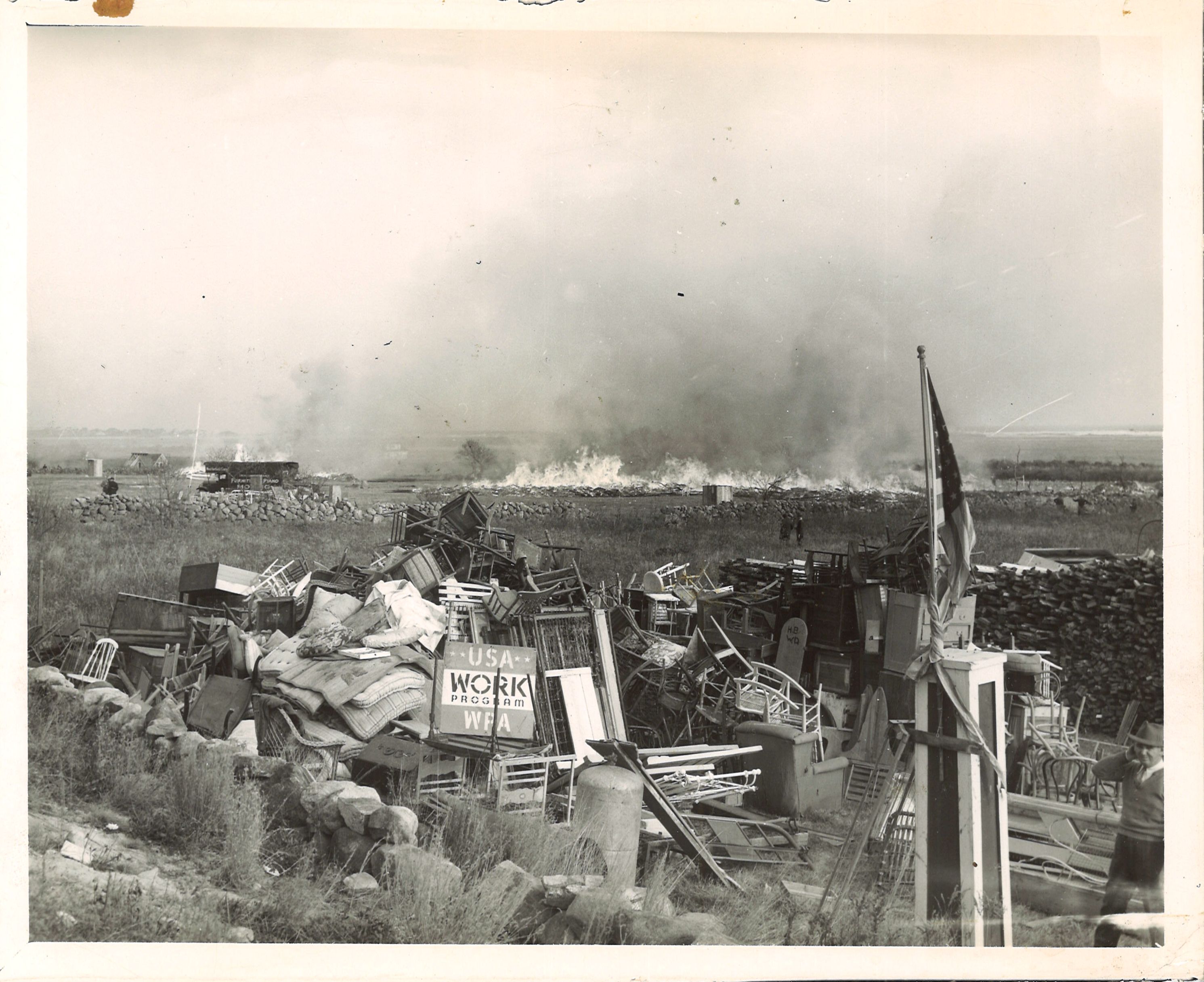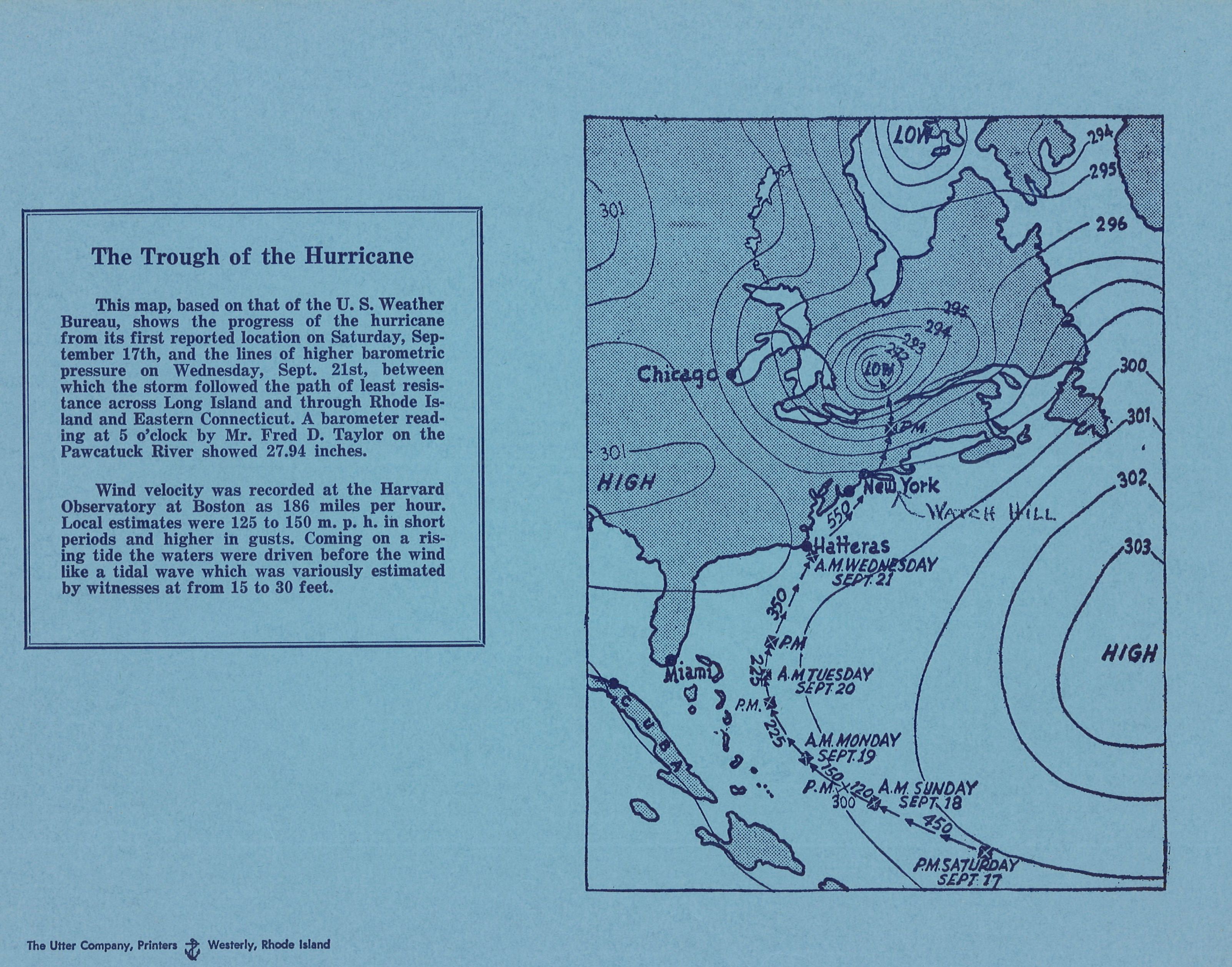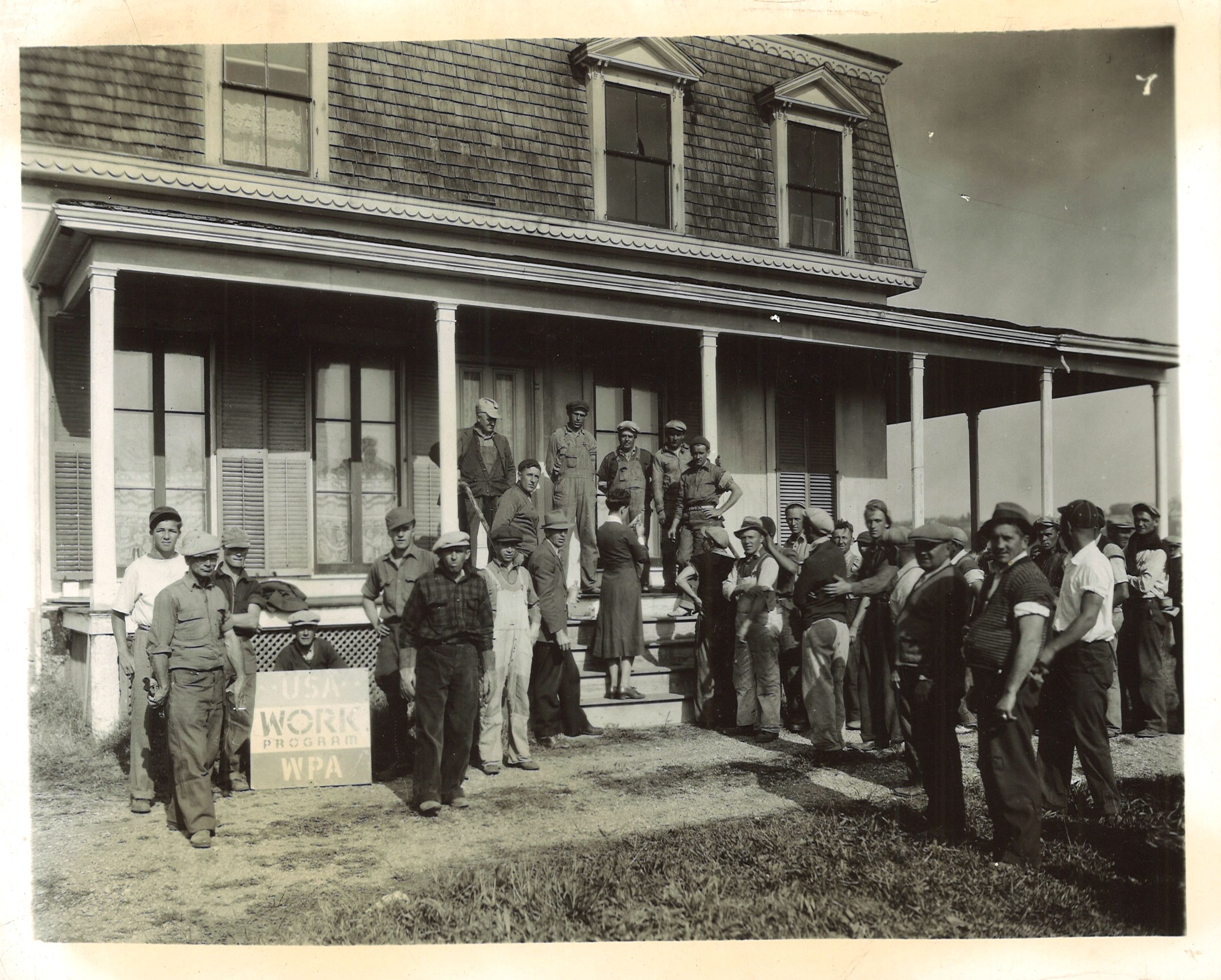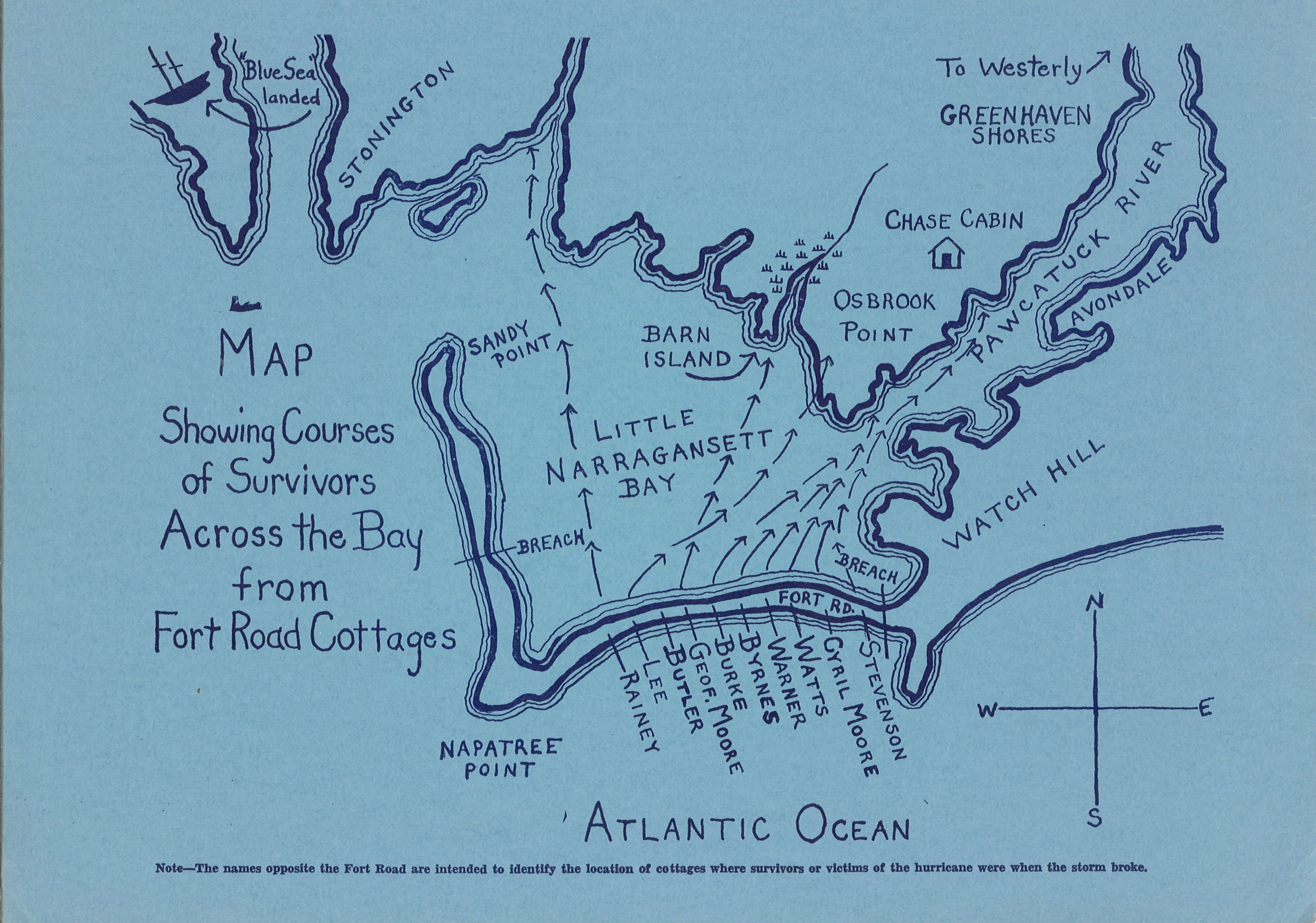
Furniture waiting to be picked up by owners. Claimants had to have passes to enter and leave this place and also had to file papers with the police stating what they claim. (Lot 276) 1992.61.11
RHi (X3) 6928
Today, via the news and social media, we are presented with not only the devastating outcomes of natural disaster but also the human stories of courage, resilience and survival. We are constantly told of the increased risks related to global warming and its domino effect on weather systems and patterns. In turn, we are much more well educated today about disaster preparedness and response. For example, the Rhode Island Emergency Management Agency (EMA) has an abundance of resources for business and individuals to plan, respond and mitigate the effects of natural disasters. In today’s Twitterverse, one can sign up for alerts through the RI EMA as well as local authorities like the Providence Emergency Management Agency (PEMA).
In 1938 we relied on instruments like barometric pressure devices and the radio to inform us about weather conditions.Today’s weather reporting systems have advanced incredibly, think pinpoint Doppler Radar. Now one can get up to the minute local weather reports on their phones, be they smart or otherwise, that give fair warning about potential catastrophes.

From: “Watch Hill in the hurricane of September 21st, 1938 : including the survivors’ stories of the Fort Road tragedy.”
![[Unidentified Family Eating Amongst the Wreckage] (Lot 276) 1992.61.13 RHi (X3) 6927](https://www.rihs.org/wp-content/uploads/2013/09/blogpost_front_2013_09_21_f.jpg?w=300)
RHi (X3) 6927

W.P. A. workers being inoculated by nurse Miss June Henebry of the State Board of Health
(Lot 276) 1992.61.5
One hour later, “Bob Loomis, last summer’s popular Fort Road officer was out in the open all through the storm and saw all that one could see through the flying spray and rain. […] Loomis noticed an unusual pressure in his ears.” The fire station suffered flooding of 6 feet 4 inches which in turn swept the fire engines out onto the road.

“…Suddenly the house began to collapse beneath us. We ran with lightning speed and as a unit down the hall and up the stairs to the third floor and just in time for the second floor had gone down like an elevator only with a sideways motion. […]
![[Home of Dr. Cabana, Narragansett Terrace] Southeast corner of Narragansett Terrace. Lower left of picture sifted sand showing after workers had looked for valuables on land of Dr. Cabana of Central Falls whose home was completely demolished. (Lot 276) 1992.61.17](https://www.rihs.org/wp-content/uploads/2013/09/blogpost_front_2013_09_21_e.jpg?w=300)
(Lot 276) 1992.61.17
The huge waves crashed over us and we had to cling for dear life. […] As we were the last house to go, there was nothing around us but our own wreckage and by the size of the waves that broke over us we thought we were headed for mid-ocean. […] Geoffrey said he saw sharks following us. The wall of the cook’s room acted as a sail for us and helped speed us along. […] We glanced over the bay at the place we had loved so much, the place we had often called “Heaven on Earth”. [b.]
Written by James DaMico, Librarian
a. Watch Hill in the hurricane of September 21st, 1938 : including the survivors’ stories of the Fort Road tragedy.http://rihs.minisisinc.com/rihs/scripts/mwimain.dll/144/RIHS_M2L/LINK/SISN+10281?SESSIONSEARCH
b. Ibid
